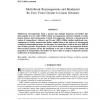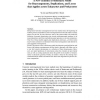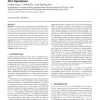12 search results - page 1 / 3 » Multi-break Rearrangements: From Circular to Linear Genomes |
JCB
2008
13 years 11 months ago
2008
Multi-break rearrangements break a genome into multiple fragments and further glue them together in a new order. While 2-break rearrangements represent standard reversals, fusions...
RECOMB
2007
Springer
14 years 11 months ago
2007
Springer
Multi-break rearrangements break a genome into multiple fragments and further glue them together in a new order. While 2break rearrangements represent standard reversals, fusions, ...
RECOMB
2010
Springer
13 years 9 months ago
2010
Springer
Background: Genomic rearrangements have been studied since the beginnings of modern genetics and models for such rearrangements have been the subject of many papers over the last ...
JDA
2007
13 years 11 months ago
2007
In the median problem, we are given a distance or dissimilarity measure d, three genomes G1, G2, and G3, and we want to find a genome G (a median) such that the sum 3 i=1 d(G, Gi...
BIOINFORMATICS
2011
13 years 6 months ago
2011
Motivation: The double cut and join operation (abbreviated as DCJ) has been extensively used for genomic rearrangement. Although the DCJ distance between signed genomes with both ...



